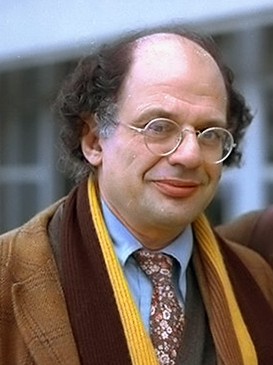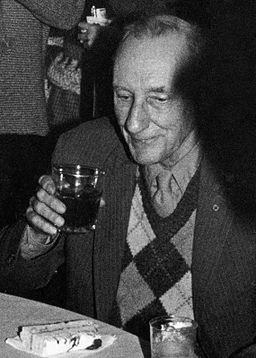1.Prologue
The history of rock music is very closely tied to the hippie movement of the mid-20th century.
The hippie movement, in turn, is deeply rooted in the state of California.
In the second half of the 1960s, the hippie movement would grow and spread across the U.S., and then germinate around the world. In this article, I will explore where the hippie movement came from, and how its worldview would influence the popular music of the day.
2.The Hip Beatniks
The hippie movement was a counterculture movement that rebelled against the established institutions, traditional values, and social norms that characterized the materialistic Western worldview up until the mid-1960s.
The hippie movement largely formed in response to the cultural standards, philosophies, and social environment of the era. It was especially influenced by the Beatniks of the 1950s.
Beatnik is a term used to refer to the more superficial aspects of the Beat Generation literary movement, which was popularized throughout the 1950s. Most of the Beat Generation writers had grown up in the so-called Roaring Twenties, the period of economic prosperity and cultural dynamism between roughly 1914 and 1929.
Beat Generation writers and their works were characterized by experimental use of drugs, sexual liberation, and other topics that were considered taboo in American society. Older generations looked down upon their antics as anti-establishment and hedonistic.
Etymologists believe the word hippie is closely tied to the Beatniks. “Hippie" comes from “hip", a word that today means stylish, up-to-date, and cool. It originated in the 1930s and 40s among African-American communities as a term that meant urbane and sophisticated, and was often used in reference to jazz musicians. In the 50s, the term started being used in reference to the bohemian lifestyles of Beat Generation writers like Jack Kerouac and Allen Ginsberg in San Francisco and Los Angeles.
3.Iconic Beat Generation Authors and Works
●Jack Kerouac
Jack Kerouac (1922-1969) was a novelist and poet born in Massachusetts. He is remembered for his autobiographical novels and his improvisational jazz-inspired method of spontaneous prose—purportedly without edits.
On the Road
Kerouac’s most famous work is considered the sacred text of the Beat Generation (and later the hippies). It is a largely autobiographical novel based on Kerouac’s travels across the U.S., and includes many key figures of the Beat movement, such as Allen Ginsberg and William S. Burroughs, represented by characters in the book.
●Allen Ginsberg
Allen Ginsberg (1926-1997) was a poet and writer born in New Jersey. He is also remembered as an activist who opposed militarism, materialism, and sexual repression.
The Yage Letters
Published in 1963, this book is a collection of correspondence and other writings by writers William S. Burroughs and Allen Ginsberg. Yage refers to ayahuasca, a plant found in the Amazon rainforest with mythical hallucinogenic properties. Most of the correspondence details the authors’ experiments with the drug.
●William S. Burroughs
William S. Burroughs (1914-1997) was a writer born in Missouri. He is known for his semi-autobiographical work drawn from his experiences as a heroin addict.
Naked Lunch
This 1959 novel by William S. Burroughs is the nonlinear tale of a junkie searching for his next fix while evading the police. Based on the author’s own experiences, this book depicts drug use, homosexuality, and violence through obscene, controversial language.
●Timothy Leary
Timothy Leary (1920-1996) was an American psychologist. As a professor at Harvard University, he conducted experiments as part of his own personal discovery and advocacy of psychedelics. He believed that the use of psychedelics could rewire and expand the brain for the better, imprinting a new personality upon the user. The ethics of his research were questioned due to the fact that he took psychedelics together with research subjects and also pressured students in his class to take psychedelics, and he was subsequently fired from Harvard in 1963. In his later years he became fascinated with computers and the internet, and proclaimed that “the PC is the LSD of the 1990s". He believed that using computers could also rewire the brain for the better.
The Psychedelic Experience: A Manual Based on the Tibetan Book of the Dead
This is a guide to using psychedelic drugs that was coauthored by Leary with his fellow researchers who had investigated the therapeutic potential of drugs such as LSD and mescaline. The Tibetan Book of the Dead is a Tibetan Buddhist text that serves as a guide for navigating the process of death and rebirth; this book is about how to navigate the experience of ego death while undergoing the psychedelic experience.
4.The Hippie Movement
The influence of the Beat Generation extended into music, films, and beyond. Its currents would converge with other movements like the civil rights movement and the anti-Vietnam War movement and grow into what came to be known as the hippie movement.
Hippies encouraged free sex and experimentation with drugs under the slogan Love & Peace. They turned away from the materialistic philosophies of Western civilization and became interested in Eastern philosophies and practices such as Taoism and yoga.
Bands like the Rolling Stones and the Beatles (especially John Lennon) were strongly influenced by these trends.
Between the Buttons
This 1967 album from the Rolling Stones features drugged out cover art that was shot in the early morning after an all-night recording session. The U.S. version includes the classics “Let’s Spend the Night Together” and “Ruby Tuesday”. Rolling Stone magazine ranked this album 357th on its list of the “500 Greatest Albums of All Time”.
Sgt. Pepper's Lonely Hearts Club Band
With their 1966 release Revolver, the four Beatles began to shed their boy band image and incorporate drug-related themes and Eastern philosophy into their music. With 1967’s Sgt. Pepper's Lonely Hearts Club Band, their various experiments with songwriting, lyrics, studio recording technology and artwork came together and blossomed into what many would consider the band’s greatest masterpiece. The album won a Grammy Award for Best Album in 1968, and was ranked 1st in Rolling Stone magazine’s list of the “500 Greatest Albums of All Time”. The song “Lucy in the Sky with Diamonds” is famous for being a song about LSD.
5.The 1967 Summer of Love
The epicenter of the hippie movement was San Francisco, California. The city would host a number of historic rock music concerts that were held in the second half of the 60s, such as Human Be-in and the Monterey Pop Festival in 1967.
These phenomena would set the stage for the Summer of Love.
The hippie movement would reach its peak at the legendary Woodstock music festival, which was held in New York between August 15th and 18th in 1969.
Woodstock gave the world some of rock’s most legendary live performances. Most people are likely familiar with Jimi Hendrix’s performance, but I also recommend checking out the other West Coast psychedelic rock bands in the concert documentary.
Woodstock: The Director’s Cut – Three Days of Peace and Music -
This is the director’s cut of a 1970 documentary of the Woodstock Festival (it’s reedited and adds a number of key performances to the original). The film won Best Documentary Feature at the 43th Academy Awards, and set the tone for concert films to come. Martin Scorsese is credited as an editor on the film.
Jimi Hendrix: Live at Woodstock
This two-disc album contains most of Hendrix’s performance at Woodstock. His rendition of the Star Spangled Banner is iconic.
6.New Hollywood and the Hippie Movement
In the second half of the 60s, the influence of the hippie movement would make its way to the silver screen. This would coincide with the end of Hollywood’s golden era—the period between the 1920s and 1960s when major movie studios had free rein to churn out hits. In their place, new filmmakers would rise in what would be called the New Hollywood movement.
Easy Rider
In this 1970 film, Peter Fonda and Dennis Hopper play two hippies on motorcycles who are presented as tragic heroes who go up against the Establishment.
Easy Rider: Music From the Soundtrack
This movie soundtrack is the perfect companion to a drive down the highway.
The Strawberry Statement
This 1970 film is based on the nonfiction book by American author James Kunen, which is a first-person documentary of the Columbia University protests of 1968. The film is set in a fictional California university, where a student indifferent to the political upheaval around him is gradually pulled into the student protests. The title is a reference to a statement made by a vice dean at Columbia University: “Whether students vote ‘yes’ or ‘no’ on a given issue means as much to me as if they were to tell me they like strawberries."
*Ichigo Hakusho wo Mouichido (The Strawberry Statement, Again)
This is a 1975 song performed by the Japanese folk group Banban inspired by the film. The music and lyrics were written by Arai Yumi (better known today as Matsutoya Yumi).
Bonnie and Clyde
Released in 1967, this film depicts the crime spree of bank robbers Bonnie and Clyde from beginning to end against the backdrop of the Great Depression. The film was considered controversial upon release for numerous reasons, including making criminals its protagonists, depicting being shot to death with graphic realism, and an allusion to oral sex.
The Graduate
The Graduate is an American coming-of-age story from 1967. A recent college graduate with no direction in life moves back home, where he is seduced by an older woman, only to fall in love with her daughter. In the iconic last scene, the protagonist crashes a wedding and runs off with the bride in dramatic fashion. However, the final shot is of the two sitting at the back of a bus, the excitement of the moment wearing off, heading toward an uncertain future.
The Graduate (Soundtrack)
Simon and Garfunkel’s era-defining “Sounds of Silence” captures a darker side of the sunny 60s, evoking the disconnect between generations and the assassination of JFK.
7.Epilogue
In this article I wrote about how the Beat Generation inspired the hippie movement, and how the hippie movement influenced rock music. In the next article in this series, I will go into more detail about psychedelic rock.




















